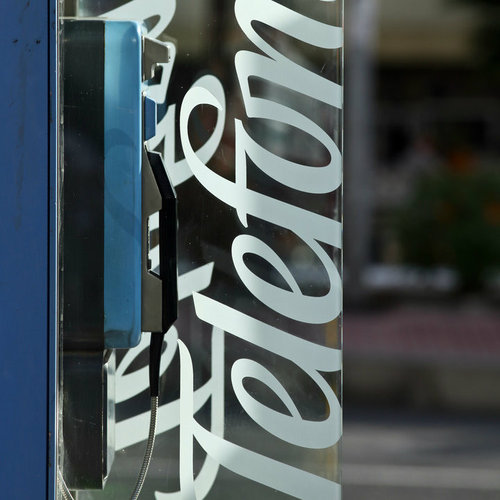Telefónica to Hit Gas on Automation With 5G Rollout
Spanish operator outlines plans to ramp up investments in artificial intelligence while blasting vendors for continuing to develop 'closed' technologies.

MADRID -- Zero Touch & Carrier Automation Congress -- Spain's Telefónica will start ramping up investments in automation tools, including a "cognitive self-optimizing network" technology based on artificial intelligence (AI), as it begins to roll out 5G networks in the next couple of years, the operator announced in Madrid today.
The Spanish telecom incumbent began deploying self-optimizing network (SON) technology about four years ago but will start migrating to an AI-based SON to address the complexity that 5G will bring, said Juan Carlos Garcia, Telefónica's director of technology and architecture, during a presentation at today's Zero Touch & Carrier Automation Congress.
"The next step for 5G will be moving to a cognitive SON where AI and deep-learning algorithms will be necessary to improve the efficiency of SON activities in our networks," he told attendees.
The plans will also entail further automation of core and transport networks to cope with 5G complexity. Garcia expects most of the heavy lifting to occur between 2021 and 2025 and has acknowledged the roadmap is "challenging." Among other things, it will mean ensuring transport networks are programmable and that hardware is fully virtualized.
Telefónica is not the first player to have drawn a link between 5G and the need for greater automation. On the vendor side, China's Huawei Technologies Co. Ltd. this year said that 5G networks would have about 50 times as many configurable parameters as their 4G predecessors -- far too many for an operator to manage through manual processes. (See Huawei's $800M 5G Budget Piles Pressure on Ericsson, Nokia.)
Providing additional color, Garcia said that introducing 5G would mean running services across additional spectrum bands and using a mixture of small and macro cells in a more "heterogeneous" network. The architecture is also likely to change radically. "In new networks, core functions may move closer to the edge, access may be closer to the data center and computing will move across the whole network," he said.
Thanks to investments it has already made in SON technology and virtualization -- largely through its UNICA program -- Telefónica is not starting from scratch. It now claims to have deployed SON systems across 17 countries and automated various activities, including site integration and carrier aggregation. Radio engineers once focused on manual work now spend most of their time on "tuning automation tools," said Garcia.
In an effort to reduce complexity in existing networks, the Spanish company has shut down more than 1,000 different operational support systems during the past four years, leaving it with fewer than 500 today. It has also removed a staggering 400,000 network elements from the 10,000 central offices it maintains for its Spanish fixed-line business.
Through the use of deep-learning algorithms, one of the next steps will be to make automation more "service aware." Telefónica also thinks it can develop a better understanding of customer needs by using data extracted from crowd-sourcing tools.
From service operations centers in Argentina, Chile and Germany, it is already using AI technologies to manage networks based on real-time analysis of customer experience data. Those systems could just as well be applied to network orchestration, it says.
Telefónica is training in-house staff in AI, machine learning and data analytics technologies, but Garcia said there is also interest in finding partners that "can take automation to the next level."
Want to learn more about network automation? Register today for Light Reading’s Automation Everywhere on April 4 in Dallas. We will be tackling the business and technology challenges behind driving network automation. The event is free for communications service providers – don’t miss out!
Underpinning all of this will be further investment in virtualization as part of the UNICA program, on which Sweden's Ericsson AB (Nasdaq: ERIC) is the lead virtualization partner. Telefónica has so far deployed UNICA platforms in the four markets of Argentina, Colombia, Germany and Peru. The plan is to extend the technologies into another seven countries in 2018, including the major markets of Brazil, Chile, Mexico, Spain and the UK. (See Telefónica Plots Unica Expansion.)
"In the next three years we will create a virtual environment in big and small data centers and this will allow us to virtualize core functions and platform applications," said Garcia.
The targets look immensely challenging given the lack of industry progress in some critical areas. Garcia echoed recent complaints by Germany's Deutsche Telekom AG (NYSE: DT) that vendors continue to develop products for their own ecosystems, and are not responding to long-running demands for interoperability. (See DT Demands Automation, Cloud Tech From Pan-Net Suppliers.)
"Industry solutions are not open enough," he said. "If it is vendor-specific and monolithic, then we will not have moved much from the current situation. This has to be broken somehow."
Indeed, in his presentation slides, Garcia emphasized in writing that: "The objective is not using white boxes for constructing YET ANOTHER SILOED SOLUTION (at square one again!!!) [Garcia's capitals]."
His objective, he said, is to ensure that virtualization infrastructure and its management becomes a commodity. With that in mind, Telefónica executives will continue looking to open source projects to avoid vendor "lock-in" and speed up NFV technology readiness, said Garcia.
— Iain Morris, News Editor, Light Reading
Read more about:
EuropeAbout the Author(s)
You May Also Like












